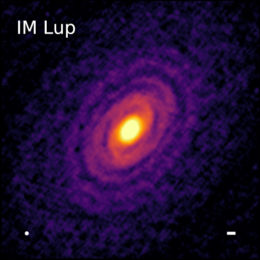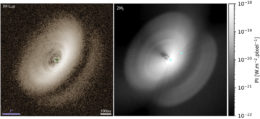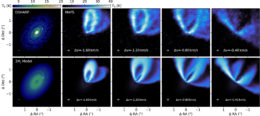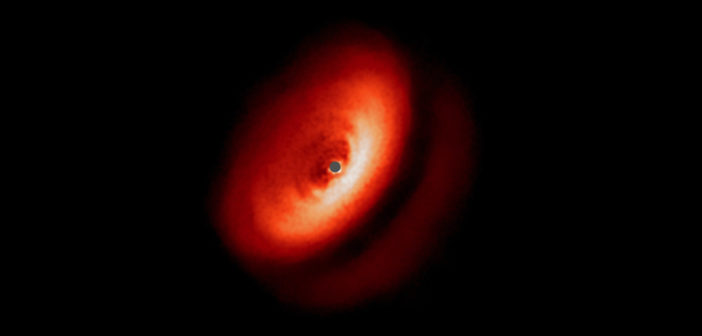The disk surrounding the star IM Lupi has come into clearer focus in the past few years thanks to new observations that revealed spirals, kinks, and other interesting structures. Could a hidden planet be the cause of all these features?
A Detailed Disk

IM Lupi as seen at a wavelength of 1.25 mm. The white bar in the lower right-hand corner is a 10-au scale bar. [Adapted from Andrews et al. 2018]
Previous research has suggested that these features could signal that IM Lupi’s expansive disk hides a massive planet orbiting the star at a distance of 117 au. In a new publication, a team led by Harrison Verrios (Monash University, Australia) puts that theory to the test.
On a Hunt for Planets
Verrios and collaborators used hydrodynamic modeling to understand how the presence of a planet would affect IM Lupi’s disk. In addition to modeling a planet-less disk as a control case, the team investigated the effects of a planet with a mass 2, 3, 5, or 7 times the mass of Jupiter orbiting the central star at a distance of 100–120 au.

Observed (left) and modeled (right) polarized intensity maps. The model shows the results for a planet with a mass of 2 Jupiter masses. Click to enlarge. [Verrios et al. 2022]
Disk Disturbances Demystified

Comparison of observed (top row) and modeled (bottom row) 1.25-mm images and velocity maps. The Δv at the bottom of each panel denotes the difference from the rest velocity of the 12CO J=2–1 transition. Click to enlarge. [Adapted from Verrios et al. 2022]
Previously, researchers theorized that a planet could only disturb its disk in a small region immediately surrounding the planet, which would suggest that the more widespread disturbances in IM Lupi’s disk must have another cause. However, Verrios and coauthors found that widespread features popped up in their simulations, suggesting that planets can have more far-reaching effects than predicted.
Citation
“Kinematic Evidence for an Embedded Planet in the IM Lupi Disk,” Harrison J. Verrios et al 2022 ApJL 934 L11. doi:10.3847/2041-8213/ac7f44
